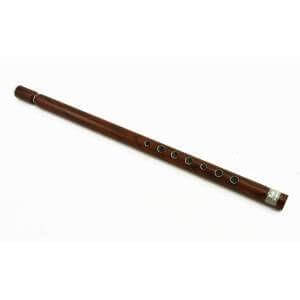Kaval
 The kaval while similar to the Syrian nāy is found in southeastern Europe and Turkey. Obvious differences between the two endblown flutes are the material used and the arrangement and number of fingerholes. This boxwood flute, used as a pastoral instrument, has been turned on a lathe. The term kaval is also used for duct flutes.
The kaval while similar to the Syrian nāy is found in southeastern Europe and Turkey. Obvious differences between the two endblown flutes are the material used and the arrangement and number of fingerholes. This boxwood flute, used as a pastoral instrument, has been turned on a lathe. The term kaval is also used for duct flutes.
The names of musical instruments often reveal origin, context, or musical function. In Europe, North Africa, and Asia where contact with Middle Eastern culture occurred, variations of Arabic and Persian terms for instruments are widespread. Usually, related names refer to similar instruments; however, this is not always true. Among these "floating terms" are the names zūrna, rabāb, kāmanja, nāy, and dombak.
Although Bulgarian kaval was at one time made from a single piece of wood, today it is made in three joined sections of wood with the beveled mouthpiece and the joint connections made of horn or bone. It has a cylindrical bore with seven fingerholes and one thumbhole drilled into the middle joint; four additional holes, called ‘devil's holes,’ are drilled in the foot joint but are never covered.